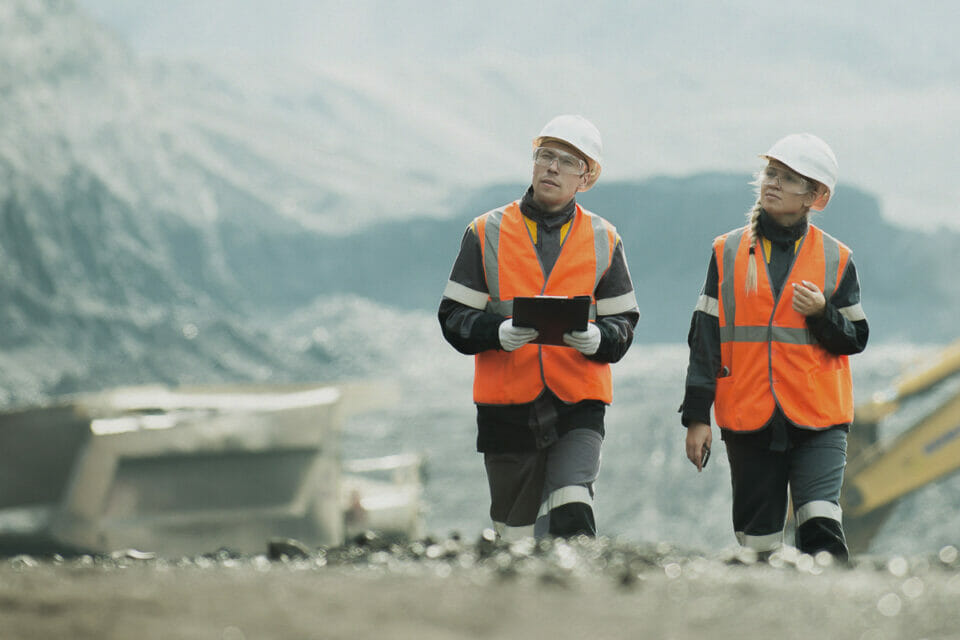
From Piracy to Participation: Why Standards in the Training Industry Matter | Risk Matrix Episode 115
THE RISK MATRIX Cutting-edge podcast on occupational safety and risk management. Hosted by industry titans: JAMES JUNKIN, MS, CSP, MSP,…
Companies must create and implement a management plan for mining contractor safety to minimize the risk of injury.

Mining contractor safety presents significant challenges and companies must identify and prepare for many potential hazards, including equipment, environment, and worker-based factors to ensure personnel safety.
Further complicating matters is the integration of mining contractors who need to familiarize themselves with the company’s specific safety management plan and best practices. Before those workers step foot on the mine site, companies must adequately prepare them for the job.
This article discusses five steps companies might take as part of a safety management program for mining contractors.
Contractor safety is crucial to mining management, as contractors often carry out high-risk activities.
Here are some key measures that can help ensure contractor safety in mining:
Before hiring a contractor, mining companies should thoroughly evaluate their qualifications, which should include the following factors:
Granted, hiring the best contractors is initially more expensive, but requiring a solid safety record is paramount because it poses less risk to the company’s mine site. Prequalification confirms mining contractors have the necessary internal safety programs, which becomes a sound business investment because it saves time and money in the long run.
Once hired, the mining company should provide the contractor with comprehensive safety training and orientation to help them understand the hazards and risks associated with their work and the safety protocols and procedures they must follow.
Topics might include the following:
Handling explosives. Handling explosives is a very specialized task that only individuals with the necessary experience and training should perform.
Using personal protective equipment (PPE). Companies must ensure that mining contractors use the necessary PPE, which should include (but is not limited to) the following:
Minimizing noise exposure. Mines are noisy places to work because of the large machinery. Most of the time, harm does not result from a single loud noise. Instead, prolonged noise exposure is what can cause hearing damage.
Managing vibration. Whole-body vibration can occur when an individual is working on a surface that is vibrating. Injuries stemming from vibration include musculoskeletal injuries (discussed below), neurological injuries, and a variety of vascular injuries.
Preventing musculoskeletal injuries (MSDs). Mining contractors typically perform significant manual labor, including:
These activities can often lead to slips, trips, and more severe falls, potentially causing MSDs.
A job hazard analysis helps identify and evaluate the potential hazards and risks associated with the mining contractor’s work. This analysis can help develop and implement appropriate control measures to minimize or eliminate the identified threats.
Identifying potential dangers is an essential step in reducing safety concerns. An excellent place to start is by creating a plan, which should indicate the following:
Mining companies should regularly inspect the work area to ensure contractors comply with safety protocols and procedures, helping identify potential hazards or unsafe practices to address promptly.
The inspector should tour the mine to ensure it follows all necessary safety regulations and that the contractors have the necessary paperwork. The inspection should also include examining the mine’s electrical and fire safety and how safely contractors operate the equipment.
The company must continuously monitor the contractor’s safety performance and promptly address deficiencies or non-compliance issues. This strategy can help identify areas for improvement and ensure that safety remains a top priority.
These precautions are made possible by tracking specific KPIs (key performance indicators) that can help your company ensure the following:
Ensuring contractor safety in mining requires collaboration between mining companies and contractors. By implementing these measures and working together to address safety concerns, companies can help ensure that all workers, including mining contractors, return home safely at the end of each day.
By leveraging our industry-leading risk management technology, configured to your specific needs, mining companies and contractors can collaborate effectively to ensure the safety of all workers.


THE RISK MATRIX Cutting-edge podcast on occupational safety and risk management. Hosted by industry titans: JAMES JUNKIN, MS, CSP, MSP,…

THE RISK MATRIX Cutting-edge podcast on occupational safety and risk management. Hosted by industry titans: JAMES JUNKIN, MS, CSP, MSP,…
We’ll send you practical and insightful supply chain risk management info that can benefit your business. Plus, important company updates that keep you in the loop.
